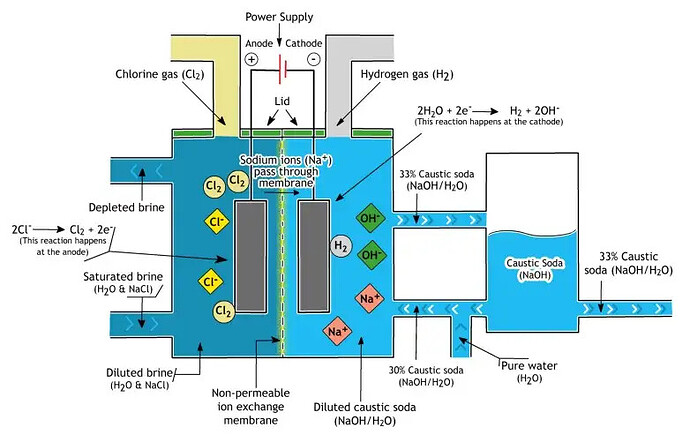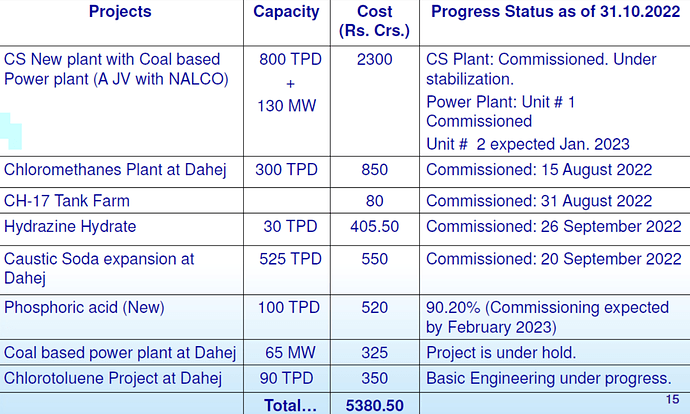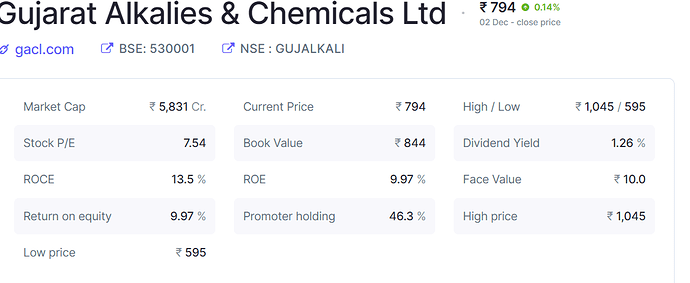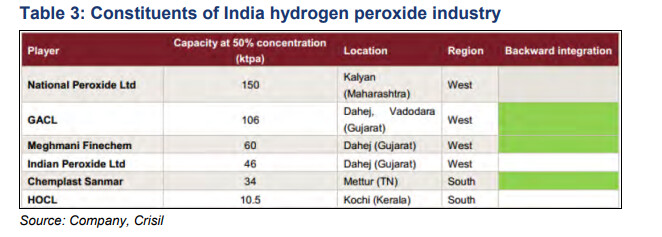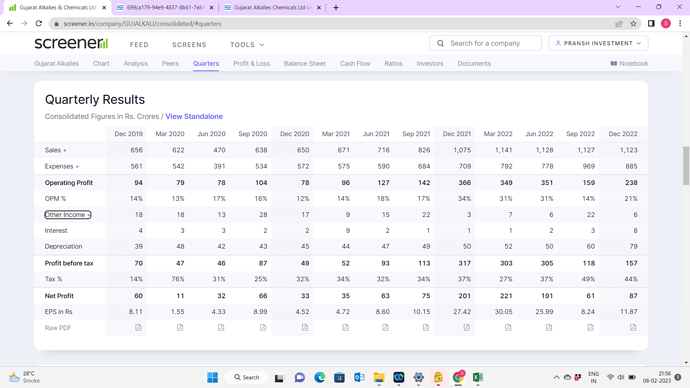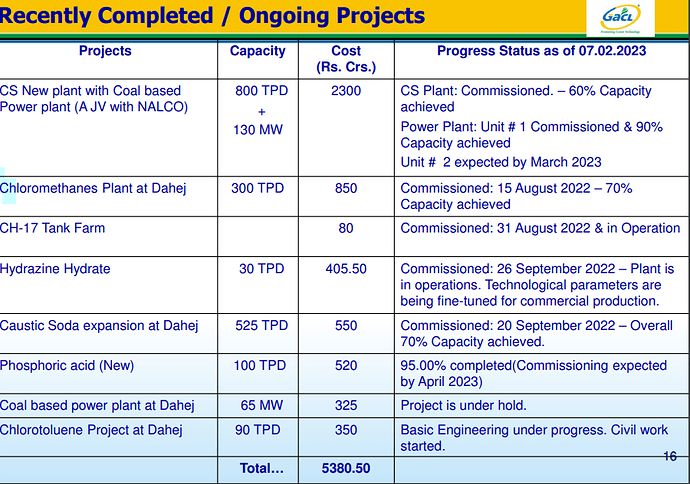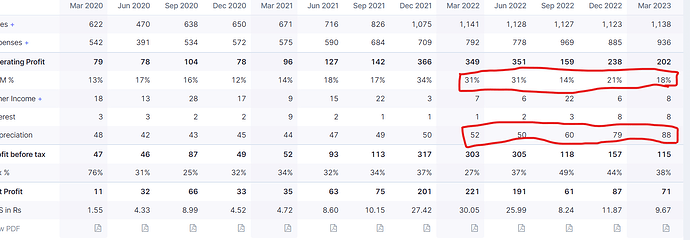Gujarat Alkalies and Chemicals Limited (GACL) was established in 1973 and over a period of time, it has emerged as one of the largest producers of Caustic Soda, Chloromethanes, Hydrazine Hydrate and Sodium chlorate in India .
Industry:
The chlor-alkali (also called “chlorine-caustic”) industry is one of the largest electrochemical technologies in the world. It is an energy intensive process and is the second largest consumer of electricity (2400 billion [kWh]
Nearly all caustic soda is generated by the electrolysis of sodium chloride solution using one of three cell types: mercury, diaphragm and membrane cells. Mercury cells are hazardous and have almost entirely been removed from service; Diaphragm relies on and asbestos as a [separator] material in diaphragm cells and is being phased out. All new production is through membrane cells which now dominate the market (>80%).
The process of manufacture uses electricity and salt. In manufacture, for every 80 tonnes of caustic soda, 71 tonnes of chlorine and 2 tonnes of hydrogen are co-produced (2.25 tonnes of 50% caustic soda with each tonne of [chlorine]. Each tonne of caustic soda requires around 2200 kWh (9000mj/t) of electricity and 1.55 tonnes of salt.
The hydrogen is used to produce hydrochloric acid, ammonia, hydrogen peroxide, or is burned for power and/or steam production. (Wikipedia)
Only part of the caustic soda product is withdrawn from the cathode compartment. The remaining caustic is diluted to ~32% and returned to the cathode compartment. The caustic solution that remains leaves the cell at about 30% concentration before often being further concentrated to 50% away from the cell. Typically this is done with a falling film evaporator.
In the membrane process, the ion exchange membrane acts as a barrier to all gas and liquid flows, and only allows the passage of sodium ions between compartments. The sodium ions pass in hydrated form to produce sodium hydroxide in the cathode where hydrogen is given off. Chlorine gas is liberated at the anode. The membrane is a copolymer of tetrafluoroethylene or a similar fluorinated monomer. (ICIS) Only part of the caustic soda product is withdrawn from the cathode compartment. The remaining caustic is diluted to ~32% and returned to the cathode compartment.
Structural Change in Industry
Chlorine and hydrogen are co-products of caustic soda, i.e., generation of one automatically leads to generation of another. With the production of 1 MT of caustic soda, 0.89 MT of chlorine and 25 kg of hydrogen gas is produced.
Chlorine
There is a marked difference in the dynamics of chlorine in India compared with the global scenario. Globally, 38% of the chlorine produced is used by the vinyl industry, whereas it is only 8% in India in the absence of bulk demand from Vinyls. Consequently, the caustic-chlorine industry in India is mainly caustic driven unlike the rest of the world, where it is chlorine driven. In India, chlorine fetched negative realization at times due to its associated disposal costs which put pressure on the ECU realizations thereby making Indian caustic soda less competitive. During FY20, India produced 15.14 lakh MTPA of poly-vinyl chloride (PVC), while imports of the polymer were staggering at 19.16 lakh MT which was far above the domestic production thus making India the world’s largest importer. However, the scenario is expected to change now as India has announced the second-highest capacity addition of PVC at 17.4 lakh MTPA by 2025 after China. Hence, the challenge and costs associated with disposal of chlorine is expected to gradually subside going forward. From past three years, the realizations of chlorine have turned positive for domestic players and the trend is expected to continue even going forward which should support the ECU realization of the sector.
Hydrogen
In India, around 40% of the hydrogen produced is captively consumed either as a fuel in boilers or for manufacturing of other downstream products, while around 30% of hydrogen is converted into low-value additive Hydrochloric acid (HCL) by reacting it with chlorine. Higher value is obtained from the balance around 30% of hydrogen only as it is either sold to third party in a compressed form (for use in hydrogenation plants) or consumed to make other products like hydrogen peroxide. Hydrogen gas is presently used in varied industries such as chemicals, petrochemical refining, metallurgical, glass and electronic industries. Hydrogen burns as a clean fuel, producing water as a by-product that makes it an efficient energy carrier and a clean and ecologically balanced fuel. During the Union budget speech in February 2021, the Honourable Finance Minister announced the launch of the Hydrogen Energy Mission to produce hydrogen from renewable sources. In April 2021, the Indian Hydrogen Alliance was formed for commercialising hydrogen technology and developing green and blue hydrogen in the country. Hydrogen is rapidly emerging as an alternative fuel choice to combat climate change and achieve de-carbonisation across industries. Thus, with India’s focus towards transition to cleaner energy, the usage and significance of hydrogen is bound to increase leading to its improved realisation.
All these structural changes (some of which are already underway) are expected to result in a more sustainable rebound in profitability of the Indian caustic chlorine industry.
GACL ![]()
GACL has capacity Utilization of more than 100% since last 4-5 Years. So Increase in expansion should lead to Sales gradually . Here is expansion story
Gujarat Alkalies & Chemicals Ltd (GACL) has reached its total caustic soda capacity to more than 850,000 tonnes/year from the 412,500 tonnes/year (31st March 2022).
GACL has commissioned the caustic soda expansion project at its Dahej complex in western Gujarat state in September 2022. The expansion project will raise GACL’s caustic soda capacity at the site to 432,300 tonnes/year. from 259,050 tonne/year currently.
GACL initially expected to begin operations at the brownfield expansion project in the fiscal year ending March 2022. Meanwhile, the company also expects to fully commission a new 266,667 tonne/year caustic soda plant of its joint venture GACL-NALCO Alkalies & Chemicals Ltd (GNAL) by January 2023, the company source said.
The GNAL project at Dahej, is a joint venture project between state-owned firms GACL and National Aluminium Co Ltd (NALCO). In April, GNAL partially commissioned a 70,000 tonnes/year caustic evaporation unit which forms part of the greenfield caustic soda project. Once operational, the two caustic soda projects will help the company cater to domestic demand as well as export markets, the company source said.
GACL is one of the largest producers of Caustic Soda in India, with a production capacity of over 1400 TPD at their two complexes eg. Dahej and Vadodara. GACL has also its subsidiary company viz. GACL-NALCO Alkalies and Chemicals Pvt. Ltd. (GNAL) putting up an 800 TPD Caustic Soda Plant together with 130 MW Thermal Power Plant (coal-based) at Dahej.
Chloromethanes Capacity will increase from 56,100 MT/A to 1,61,100 MT/A , increase of 187% a giant increase . It is a raw material for Polymers which is used in Solar Panel, batteries and green Hydrogen.
Hydrazine Hydrate : India imports almost all of its annual requirement of 17,000 tonnes of hydrazine hydrate, which is mainly used as a starting product in agrochemical, pharmaceutical, automotive and leisure industries. The GACL unit "will be the first large-scale factory of hydrazine hydrate and will cut down the nation’s import of the chemical by 60% as GACL will produce 10,000 tonnes of hydrazine hydrate annually as plant is commissioned on 26 September 2022.
Future Expansion:
Phosphoric acid
The Phosphoric acid plant is 90.2% complete and is expected to be commissioned by February 2023. The Capex for the plant is Rs. 520 crore.
Chlorotoluene
Chlorotoluene Project at Dahej with a capacity of 90 TPD will cost Rs. 350 crore and presently, basic engineering work is under progress for the plant.
Bio- Ethanol
The Hon’ble Prime Minister has launched a Roadmap for 20% Ethanol Blending in Petrol by 2025, with a view to reduce import of crude oil and save valuable foreign exchange. In response to the Hon’ble Prime Minister of India’s call for ‘Atmanirbhar Bharat’, your Company and GAIL (India) Limited (GAIL) have signed Memorandum of Understanding(MoU) for setting up a 500 KLD Bioethanol plant in Gujarat. The estimated project cost is to the tune of Rs.1,000 Crores and it is expected to generate annual revenue of approximately Rs.1500 Crores. A Term Sheet for the same has been executed between the Parties.
Green Ammonia and Green Methanol
Gujarat Alkalies & Chemicals Ltd (GACL) has entered into an agreement with NTPC Renewable Energy (NTPC REL) to produce 75 tonnes/day of green methanol and 35 tonnes/day of green ammonia.
The two plants, which will use renewable energy produced by NTPC REL, will be India’s first commercial-scale green ammonia and green methanol projects, the Ministry of Power said.
“NTPC REL has signed a memorandum of understanding (MoU) with GACL to realize green energy and green hydrogen objectives and the government’s efforts towards a carbon-neutral environment,” it said.NTPC will ensure a constant supply of 100MG (megawatts) of renewable energy to the plants.
The methanol and ammonia output will be used by GACL at its Vadodara and Dahej complexes in western Gujarat state to produce various downstream chemicals, the statement said.
Operating Margins
Integrated Operations : The operations of GACL are well-integrated, with the byproduct of
one process used as a raw material for another, thus enabling the company to optimally utilise its large production capacity. It also protects GACL’s profitability, to an extent, from the effects of the inherent cyclicality in the demand for its major products, as the adverse demand scenario for one set of products is countered by the favourable movement in other products.
Captive Green power generation to meet part of its energy requirements: The captive
power plant for meeting part of its energy requirements and the investment in windmills and solar power plants to offset the higher cost of power purchased from the market, aids its cost structure. The total installed capacity of the solar power plant stood at 35 MW at the Charanka Solar Park – Patan, 640 kW floating solar power plant on the reservoir of the captive power plant, and 220 kW solar rooftop installations at its Dahej complex, apart from a wind power generation capacity of 171.45 MW, captive 90 MW gas-based power plant, and 40-50 MW participation in a 145-MW group captive gas-based power plant operated by Gujarat Industries Power Company Limited (GIPCL; rated CARE AA-; Stable/CARE A1+). The average cost of power consumed by GACL stood at ₹7.12 per unit in FY22.
GACL is expected to make an turnover of more than 10k crore by 2028 with 20-25% margins We are coming up with expanded chloro methane production capacity says Pankaj Mittal, Head (Marketing), GACL
Turnover as per Capacity for FY 2021-22
| As on 31.03.2022 | ||||
|---|---|---|---|---|
| PRODUCTS | Installed Capacity | Sales Amt (in crs) | Expected Sales Amt (in crs) | Remarks |
| Caustic Soda Lye | 4,12,500 | 1,168 | 1,659 | 42% increase in Dahej Capacity |
| Caustic Soda Flakes/Prills | 2,18,000 | 490 | 490 | |
| Chloromethane | 56,100 | 339 | 973 | 187% increase in Dahej Capacity |
| Caustic Potash Lye | 39,600 | 248 | 248 | |
| Potassium Carbonate | 13,200 | 98 | 98 | |
| Hydrogen Peroxide | 54,120 | 276 | 276 | |
| Phosphoric Acid | 26,730 | 245 | 580 | 137% increase in Dahej Capacity |
| A. Aluminium Chloride | 53,700 | 321 | 321 | |
| Poly Aluminium Chloride | 73,250 | 70 | 70 | |
| Chlorinated Paraffin (CPW) | 12,000 | 9 | 9 | |
| Stable Bleaching Powder | 30,000 | 21 | 21 | |
| Sodium Chlorate | 20,000 | 109 | 109 | |
| Hydrazine Hydrate | 400 | An Import Subsitute | ||
| Benzyl Chloride & Alcohol | 142 | 142 | ||
| ChloroToluene | 350 | Estimated Turnover | ||
| Bio Ethanol | 1,500 | Management Estimate | ||
| Others | 89 | 89 | ||
| 10,09,200 | 3,626 | 7,336 |
GACL has a potential to walk the talk and make a turnover of 10k in the coming years and margin of 20-25% and is currently trading at below book value and less than 8 PE
Disclaimer : Invested

